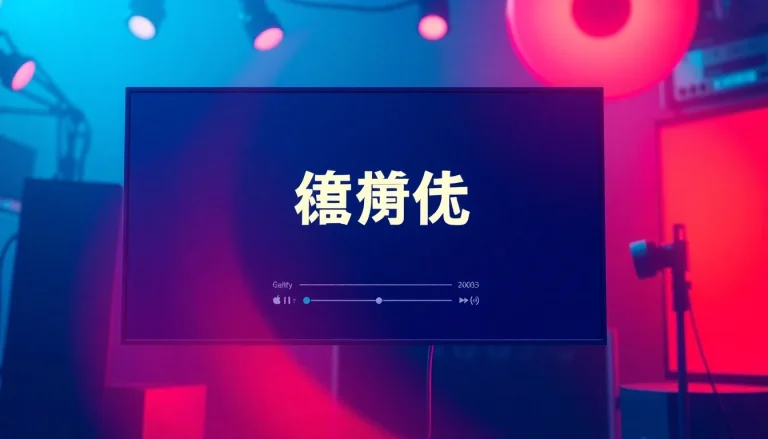
Understanding the Basics of Music Pitching
What is Music Pitching?
Music pitching is the process of presenting your music to potential curators, promoters, industry professionals, or media outlets in hopes of gaining exposure, playlists, or placement opportunities. Essentially, it involves crafting a compelling narrative around your music to persuade these individuals or platforms to feature your work. This can encompass various genres of music and target different audiences, making it a vital skill for artists wanting their music to be heard amidst the ever-expanding sounds of the industry.
Importance of Music Pitching in Music Marketing
In today’s digital age, effective music pitching is crucial for artists looking to stand out. With streaming platforms like Spotify, Apple Music, and emerging social media channels rapidly absorbing the music market, artists must leverage these platforms effectively. This not only improves visibility but also fosters connections with listeners who might have never discovered the music otherwise. Notably, a well-pitched song can lead to placements on popular playlists, which can drastically enhance an artist’s reach and engagement. Moreover, proper pitching can also lead to other beneficial outcomes such as interviews, features on music blogs, and performances at events.
Common Myths About Music Pitching
Much like any niche skill, music pitching is surrounded by misconceptions that can hinder an artist’s approach. Among these myths is the idea that simply submitting music to every platform or contact will lead to success. In reality, tailoring pitches to specific audiences and curators is vital. Another common myth is that artists with professional representation have a better chance of success. While representation can help, independent artists can and do achieve success through strategic pitching. Understanding these myths is essential for any artist looking to navigate the music industry successfully.
Crafting an Effective Music Pitch
Key Elements of a Successful Pitch
Creating an effective music pitch requires a combination of several key elements:
- Personal Touch: Personalizing your pitch while addressing the curator or platform specifically can increase your chances of getting noticed. Instead of a generic “To Whom It May Concern,” use the specific name of the person you are contacting.
- Compelling Subject Line: Your email or submission’s subject line is the first impression. Craft an intriguing and concise subject that entices the recipient to open your email.
- Brief Artist Bio: Include a short bio that outlines who you are, any notable achievements, and why your music is unique. Keep this succinct to maintain the curator’s attention.
- Smartly Presented Music: Instead of sending large file attachments, provide streaming links to your tracks making it easier for curators to listen.
- Clear Call to Action: Whether you’re looking for a review, a placement on a playlist, or feedback, make sure this is communicated clearly within your pitch.
Tailoring Your Pitch for Different Platforms
Not all platforms or curators are the same; hence, tweaking your pitch accordingly is key. For instance, when pitching to Spotify playlist curators, the focus should be on engagement metrics, your fan base, and how your song aligns with their playlist theme. On the other hand, when contacting music blogs, emphasizing unique storytelling or personal experiences related to the song may resonate better. Understanding the audience and respective preferences of each platform partakes in the ability to craft a pitch that succeeds.
How to Research Your Target Audience
Effective pitching begins with understanding your audience. Utilize tools and resources such as music blogs, Spotify’s genre categories, or social media trends to glean insight into who listens to similar music. Explore playlists with similar sounds and study how they organize their features. Analyzing these aspects allows you to connect with curators who cater to those audiences, boosting your chances of having your music featured. Furthermore, learning about the specific preferences of curators, such as their previous playlists or blog focuses, can further personalize your approach.
Leveraging Social Media for Music Pitching
Best Practices for Pitching on Social Platforms
Modern music pitching extends far beyond emails; it incorporates social media engagement. Engaging with bands, artists, curators, and fans can amplify your reach. Practical approaches involve tagging curators in your relevant posts or stories, sharing snippets of your music, or even live sessions to showcase your energy and artistry. Additionally, joining music-related groups and forums can serve as platforms to hone your pitching skills and receive constructive feedback.
Building a Following Before Pitching
While having quality music is crucial, having an audience to pitch to is equally important. Artists should focus on building their social media presence with engaging content that resonates with fans, including behind-the-scenes footage, insights into the songwriting process, or interactive Q&As. Platforms like Instagram, TikTok, and Twitter offer valuable channels to connect and grow relationships with potential listeners and curators alike. A solid following can not only help grab curators’ attention but also provide valuable social proof of your music’s potential.
Using Influencers to Amplify Your Music Pitch
Another effective strategy in music pitching is leveraging influencers who align with your genre or style. Influencers can provide significant exposure by sharing your music with their audience, thereby creating buzz before your official pitch. Building relationships with influencers through collaborations or outreach strategies is essential. Not only does this widen your reach, but it also helps establish credibility for your music when an influencer praises it.
Tools and Resources for Pitching Your Music
Recommended Platforms for Music Submission
Several platforms can be advantageous for artists aiming to pitch their music effectively. Music pitching can frequently rely on platforms like SubmitHub, which facilitates sending songs to playlists, blogs, and influencers. Services such as Groover also allow musicians to directly connect with music bloggers and influencers. Exploring these platforms enables a diverse and strategic approach to getting music heard, making the process less daunting and more efficient.
Using Analytics to Improve Your Pitching Strategy
Once you have begun pitching, utilizing analytics can significantly enhance your approach. Platforms like Spotify for Artists and Apple Music provide data on listener demographics and engagement patterns. By studying these analytics, artists can identify trend patterns that will help tailor future pitches. Tracking the performance of linked social media campaigns can also inform on what resonates with viewers, allowing for continuous improvements.
Networking Resources for Musicians
Networking remains a critical component of music pitching. Building relationships in the industry can create opportunities that lead to music placements or collaborations. Utilize platforms such as LinkedIn or Musician’s Networking events to connect with other artists, curators, or industry professionals. Online communities on Reddit or Discord that focus on music collaboration can also be valuable for learning and expanding one’s network.
Measuring the Success of Your Music Pitching Efforts
Key Performance Indicators for Music Pitching
When evaluating the effectiveness of your pitching strategies, understanding key performance indicators (KPIs) is essential. Metrics may include the number of playlist placements, engagement statistics (likes, shares, comments) on social media, or direct feedback from curators. In addition to quantitative metrics, paying attention to qualitative feedback is valuable — a positive response, even if not leading to an immediate placement, can be an indicator of a notable connection.
Adjusting Strategies Based on Feedback
Being open to feedback and ready to adapt your strategy is crucial. If certain pitches did not elicit the expected response, it might be worth re-evaluating your approach or modifying elements of the pitch. This could involve revamping your bio, improving audio quality, or even tailoring messages better to audience preferences. Continuous adaptation not only improves your chances of placing music but also enhances your overall marketing and outreach strategies.
Long-term Planning and Continuous Improvement
Music pitching should be viewed as an ongoing endeavor rather than a one-time effort. Establish long-term goals for how you want to reach audiences and the industry through thoughtful music pitching. Regularly revisit your analytics and assess which strategies yield the best outcomes. The music industry is ever-evolving, hence keeping abreast of trends and adapting to change will position you favorably in a competitive landscape.





